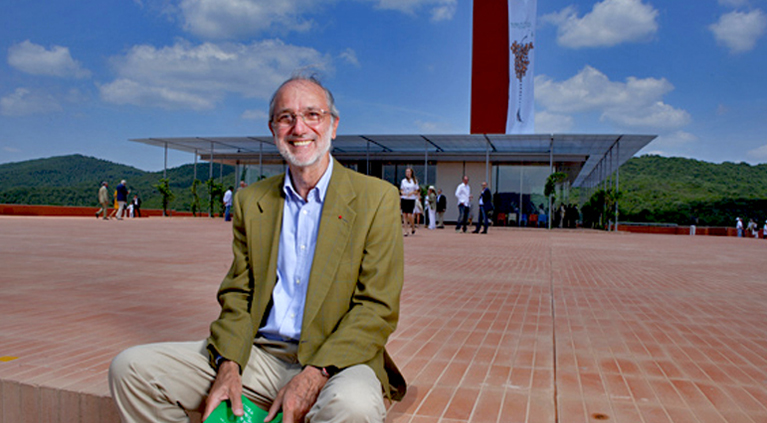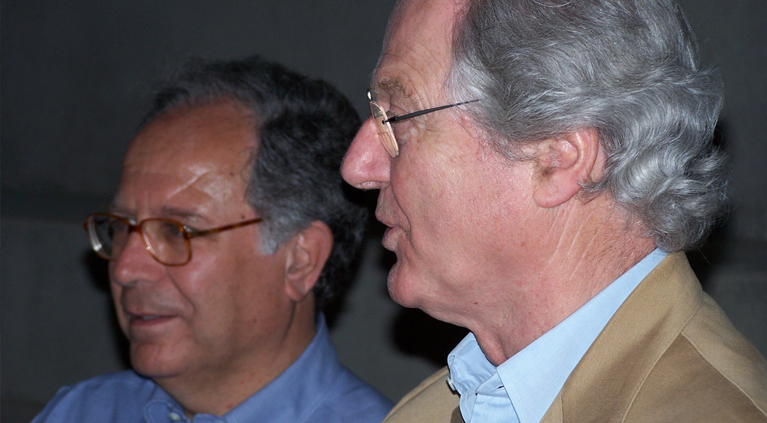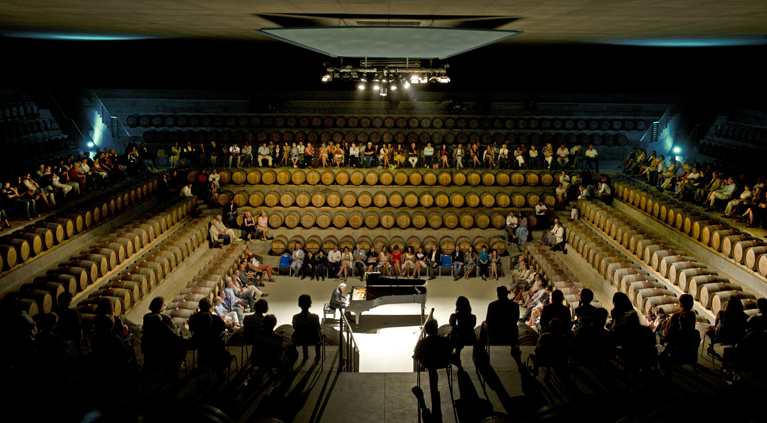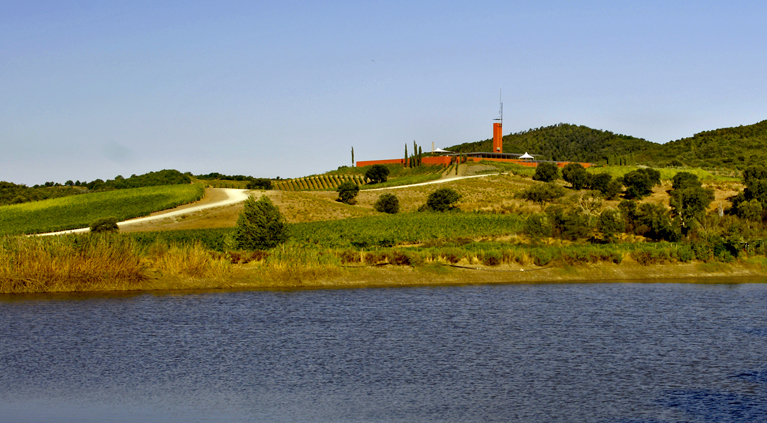

“Uncompromising quality, producing every year a pure Merlot wine among the most appreciated by international wine critics.”
Discover“On the hill of San Germano the vine was already cultivated 3,000 years ago by the Etruscans. Today the new Rocca di Frassinello Grand Cru is born here.”
Discover“The best Vermentino grapes treated with care right from the harvest, for a wine of great persistence that is able to refine in the bottle for several years.”
Discover“The refinement of Sangioveto is combined with the structure of Cabernet and the softness of Merlot, creating a balance based on elegance.”
Discover“By its fifth vintage it was already in Wine Spectator’s TOP 100. A wine of great aromatic complexity that retains a wonderful freshness.”
Discover“Created in honour of the ‘butteri’, the cowboys of the Maremma. It contains 20% Syrah, giving an engaging spiciness to its rich texture.”
Discover“A wine with beautiful Maremma character and a marked personality. Straightforward, direct, never banal”
Discover“Light pink of peach petal thanks to the brief contact with the skins of the Sangioveto, it invites the sip with fruity notes of peach and pomegranate”
Discover“A wine that evokes the sea, the Tuscan coast. With a pleasant flavour and a fresh acidity, it is ideal for accompanying an aperitif or a tasty plate of fish”
Discover“A collaboration between Rocca di Frassinello and the eclectic and eccentric artist David LaChapelle to create a limited and exclusive edition of the winery Grand Vin.”
Discover“A label which combines two great projects realized by the Master, Rocca di Frassinello and Beaubourg in Paris, for a limited and exclusive edition of the winery Grand Vin.”
Discover“A label reproducing a sketch by Renzo Piano for Rocca di Frassinello to celebrate the great architect’s appointment as a life senator”
Discover“This label displays an image of the Dionysian procession taken directly from an antique vase (stamnos) used to contain wine, a tribute to the work being done to rediscover the ancient Etruscan necropolis lying in the area of Rocca di Frassinello”
Discover“A special edition of the first label of Rocca di Frassinello – the Grand Vin, Rocca di Frassinello – to celebrate the holy year.”
Discover“Finished in the same barriques used to age the Rocca di Frassinello wine, this is a grappa with a pleasing softness”
Discover
Stay at Rocca di Frassinello Guest House
At Rocca di Frassinello guests are treated to a fascinating journey through time, from the contemporary architecture of Renzo Piano’s cellar, to Italo Rota’s exhibition – The Etruscans and Wine at Rocca di Frassinello – located inside the winery, whose ancient finds prove the profound history of winemaking on this site, dating back almost three millennia ago. The journey continues with a wine tasting in the pavilion where the Rapture of the Grape is displayed: a work by the great American artist, David LaChapelle, who was inspired by Rocca’s unique sense of place. To complete the visit in the cellar, we suggest a relaxing stay in the Rocca di Frassinello guest house, located inside the building to plunge deep down into the pristine nature of the estate and live step by step the wine production cycle from the vineyards to the bottle.
The Rocca di Frassinello project was inspired by a very simple idea – or should we say a very simple need: to replicate the model of excellence set in motion by the Castellare di Castellina winery in a new region. We set our sights on the central Maremma area, between Bolgheri and Scansano, where a sort of geological foot can be found, with the same characteristics as the Chianti and Montalcino terrains (of which this foot is in fact a kind of extension towards the sea). Land, therefore, similar to Tuscany’s most famous wine regions, but with one important difference: an average temperature 4 to 5 and even 6 °C higher, with grapes therefore characterised by the ability to ripen even three to four weeks earlier..
This area, so incredibly well suited for cultivating grapes is part of the Gavorrano and Roccastrada municipalities. It was precisely there that the first Italian-French joint venture project for the production of wine took shape. The agreement at the time (in the photo on the right Baron Eric de Rothschild with Paolo Panerai) between Castellare and Domaines Barons de Rothschild Lafite, i.e. the most famous signature of the wines of France and the world, previsie from the beginning to put together the experience of Castellare in the cultivation and winemaking of the main grape variety tuscan, Sangioveto, and Lafite on classic French vines, Cabernet, Merlot, Petit Verdot, Shiraz. It took two years to merge the five farms that make up the 500 hectares of Rocca di Frassinello, the hectares of vineyards planted are today about 90. This already extremely ambitious venture has been further enriched by marking and pairing the birth of the Rocca di Frassinello winery with one of the most prestigious names in the world of design and architecture: that of Renzo Piano. (nella foto a sinistra).
Discover more about A Family Passion

Rocca di Frassinello lies on the right hillside heading north that forms on either side of the old Aurelia road and which, thanks to the first major Roman road, forms a sort of canyon through which the sea wind blowing from the plain between Castiglione della Pescaia and Grosseto travels across. This constant breeze takes away any moisture from the air and provides for an even milder climate, both during the winter and summer months. The tallest hill in the area is situated right in front of the village of Giuncarico, on the right side of the Aurelia heading north. The top of that hill, which is part of the Terminuzzo estate, offers a spectacular sea view over Marina di Grosseto, all the way to the Uccellina Regional Park. Having taken shape thanks to an Italian-French joint venture, the nearly 90 hectares of vineyards are characterised by equally divided varieties: 50% Italian and 50% French, while all wines are blends, excluding the Baffonero which, in the spirit of the America's Cup, serves as a challenger to Masseto, (100% Merlot), the most famous Italian wine produced by our friends, the Marchesi Frescobaldi family, owners of the Ornellaia estate. A complete opposite to the Castellare di Castellina philosophy, characterised by vines that are not blended with international ones. The first vintage was produced in 2004 and included approximately 130,000 official bottles.

Rocca di Frassinello chose Renzo Piano, just as Renzo Piano, in turn, chose Rocca di Frassinello. The motivation is rooted in the longstanding friendship that binds the famous architect to Paolo Panerai, as well as in the family legacy of a father who was a wine producer, particularly of Dolcetto. Renzo Piano has designed a cellar essential in terms of its shape and conceived not to serve as a monument to the customer or to the wine, but rather to enhance the functionality of what it represents: remaining a place where productive work unfolds – work of a specific, ritual, almost sacral nature – yet at the same time humble. Typically, wineries are characterised by a progressive and horizontal development of the premises to follow the production cycle: from the vat cellar to the barrel room and finishing up in the storehouse. Renzo Piano has revolutionised this concept of space, posing the question of what really is the heart of a wine cellar. There, where the wine ages, remaining in barrels or bottles, where its quality improves. The answer: the barrel room set in a central underground position, making it possible to naturally maintain a stable humidity and temperature. An imposing 40 by 40 square metre space, with an enormous floor slab that stands without being supported by any columns. All around, like a 20-metre frame, the distribution of all aspects of the production cycle unfolds. The steel tanks are distributed on two sides of the area and above each one stands a chute that opens onto the roof above. The roof of the barrique in fact serves a dual purpose as the large work area created above – the churchyard as Renzo Piano calls it – while from those chutes come down the grapes carried in crates, which before descending without the stress of pumps are carefully selected on special work benches. All other production functions are distributed along the other two sides: bottling, storage, warehousing and logistics.
Meet Our Winemakers

"Rocca di Frassinello, like all "fortresses", aspires to resist against something – perhaps in this case banality.
Frassinello conveys the idea of the modern world composed of countless bridges between past and future, Renzo Piano vs. the Etruscans, the Etruscans vs. Paolo.
Offering a future to Frassinello’s past, the Etruscans gave us this beautiful vase depicting Dionysus, for the festivities to begin!"
Italo Rota (creator of the Etruscan exhibition housed by the Rocca di Frassinello)

Loc. Poggio alla Guardia - Giuncarico Scalo
Gavorrano (Grosseto)
Tel: +39.0566.88400
Fax: 0566.88930
e-mail: visite@roccadifrassinello.it
Driving from Livorno (North) or Rome - Grosseto (South), we recommend to take the Giuncarico exit of the Aurelia SS1 highway. Then, follow the road signs for Rocca di Frassinello for about 6 km. Driving from Florence (East), on the Siena - Grosseto highway (SS223 / E78), take the exit Civitella Marittima and continue towards Roccastrada and then Ribolla. From here, follow the directional signs for Rocca di Frassinello for about 8 km.
Attention: driving from Livorno we suggested exclusively the Giuncarico exit of the SS1 Aurelia as the only way to reach the winery.
- Spring / Summer, from 10 am to 1 pm and from 2 pm to 7 pm
- Autumn / Winter, from Monday to Friday 10 am / 1 pm and 2 pm / 6 pm, Saturday and Sunday 10 am / 1 pm and 2 pm / 6 pm.
Guided tours of the winery are available by reservation only. It is possible to book a visit in the Wine Experience section of our website, alternatively by calling 0566/88400 or by sending an email to visite@roccadifrassinello.it.